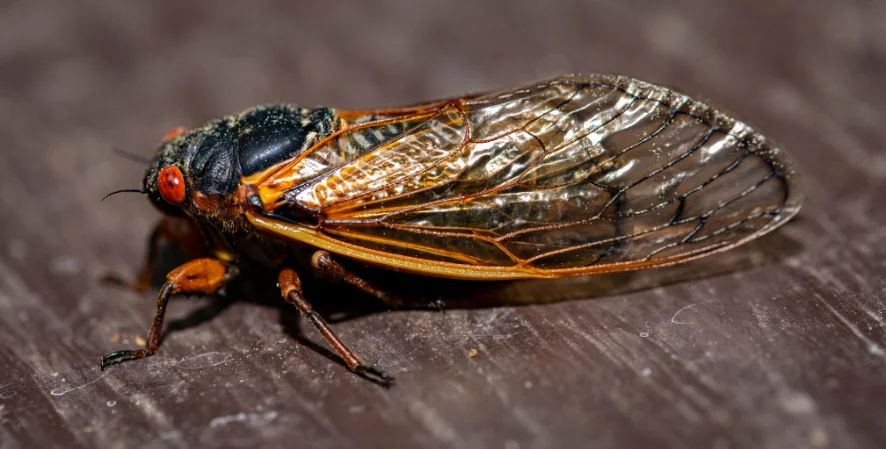
Cicadas in Indiana
Seventeen years ago, the last episode of Friends was broadcast, SpaceShipOne became the first privately funded spaceflight, The Polar Express and The Incredibles were released in theaters, and we said final goodbyes to President Ronald Reagan.
It was also the last time we witnessed one of nature’s most spectacular events — the emergence of the Great Eastern Cicada Brood, called Brood X. Over the next few months, these unique insects are set to finally leave their underground homes, singing their hearts out in one of the most vibrant wonders of the natural world, and restarting their 17-year life cycle.
Unlike the annual cicadas that emerge each year, the periodical cicadas of Brood X haven’t been seen since 2004. The female insects created tiny slits in the bark of newer tree branches where they laid the eggs, and some people may remember that caused leaves to turn brown at the tips of those branches. But don’t worry, this doesn’t permanently damage the trees. Remarkably, those females laid more than 400 eggs during their brief adulthood and then died after only a few weeks above ground.
Between six to 10 weeks later, those eggs hatched into nymphs that were roughly the size of an ant. They dropped out of the trees and burrowed several feet into the ground where they remained, growing while they fed off the sap in the tree’s roots.
Fast forward 17 years, and the nymphs have now crawled up near the ground’s surface and have begun digging exit burrows. You likely will see holes the size of a small finger appearing around the base of older trees over the next several weeks. When sub-surface soil temperatures reach the mid-60s, the cicadas will begin to emerge by the millions.
Still cloaked in their nymph skin that makes them look like a brown, wingless beetle, they will start climbing the trunks of trees or any vertical surface. That’s where they will shed the nymph exoskeleton (the crunchy part you’ll see dried on trees) and emerge as adults with a striking yellowish white color.
Over the next several hours, their body will change color to a dark black with bright red eyes and they will spread their orange-lined wings for them to dry. The cicadas then take flight, and males (only the males) make that unique sound to attract females. These animals’ urge to mate is so strong, they might try to mate with your lawn mower, which produces a similar sound. After mating several times, the male dies and the female starts laying her eggs, starting the whole process again.
Scientists believe the cicadas’ long lifecycle, along with their sheer numbers, gives the species a survival advantage. This year they will be an abundant food source to a lot of local wildlife. Uneaten cicadas eventually decompose and contribute to the nutrient cycle.
So when you see cicadas this year, enjoy them and celebrate their unusual life cycle, as we won’t see them again until the spring of 2038. And during the next 17 years, try to keep from cutting down mature, living trees, because they are likely supporting this year’s growing cicadas. You can also become a citizen scientist by recording what you see at Cicada Safari.
Common Questions about Cicadas
DO CICADAS BITE?
No. Cicadas have sucking mouthparts, not chewing mouthparts. Unlike mosquitoes, they can’t bite human skin and they only suck sap from trees.
HOW LOUD ARE CICADAS?
They have been recorded up to 110 decibels, or slightly louder than a motorcycle or jackhammer.
DO CICADAS DAMAGE TREES?
Females cut a small slit on the end branches of trees to deposit their eggs, which can result in the very ends of trees dying but typically doesn’t impact the trees long term. Cicadas drink sap throughout their lives, which doesn’t harm the trees. Cicadas typically can only damage very young or sick trees.
WHAT EATS CICADAS?
A lot of mammals, birds, amphibians, reptiles, fish, other insects and arachnids eat cicadas. Even with so many animals eating them, it is likely you will see their carcasses everywhere. You may even be lucky enough to see a cicada wasp catch a cicada mid-air. They sting and paralyze the cicada and fly it back to their undergrown nest where the female cicada wasp will lay an egg on the cicada. When the egg hatches, it feeds on the cicada until it is ready to become an adult wasp.
Published May 11, 2021

